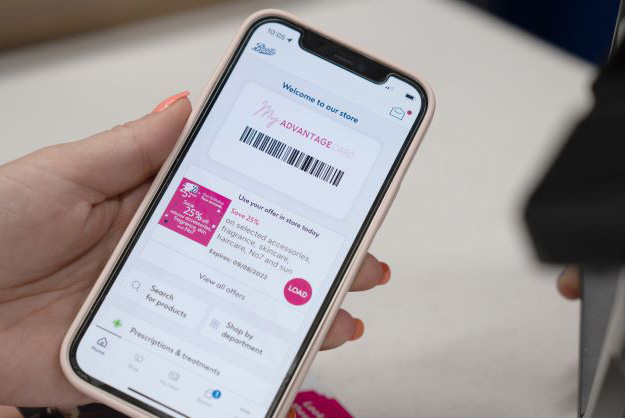The Year Ahead 2025: This is what will make or break retail media

Opinion
In 2025, how can retail media do an even better job convincing brands — and the world — that it is worth the investment and will transform marketing for the better?
In 2025, retail media in the UK will become a £1bn sector. It’s a landmark because that figure from IAB UK doesn’t include Amazon. By 2028, retail media excluding Amazon is predicted to hit £2.3bn in adspend. That’s up from £588m in 2022.
The IAB study, published in October, is the latest in a long line of adspend studies suggesting retail media is growing at a rate not seen since Google and Facebook entered the market.
2024 has seen exceptional interest from brands, coupled with an extraordinary level of investment in retail media network (RMN) infrastructure.
In October, SMG and the Path to Purchase Institute hosted the Retail Media Summit UK to listen to the observations and predictions of retailers, agency partners, tech companies and brands. Being British, the vibe was one of quiet confidence, matched by a degree of introspection. We were left with the thought that retail media won’t just grow; ultimately, it will transform advertising as a whole. “Retail media” will become “media”.
But will it? This year, what do we need to see from retail media to convince brands — and the world — that it is worth the investment and will transform marketing for the better? There are many areas of rapid change, including industry-wide alignment on measurement and better integration with tech platforms and other media.
There are four things in particular that together make this year a pivotal moment that will decide whether the sector becomes more than the sum of its parts.
From performance to brand-builder
For many marketers, the wake-up call that retail could operate across the funnel came with Amazon’s integration of advertising VOD and its commerce stack. And yet there is a lot more to retail media’s brand-building potential.
Working with the Path to Purchase Institute and Mesh Experience, SMG explored whether retail media can drive brand awareness and equity. We tracked the real-time experiences of more than 10,000 respondents, stripping out owned media such as websites and PR, and experiences such as buying a product, leaving only retail media advertising alongside other mass-media touchpoints.
The study showed that retail media delivers an uplift multiple ahead of other mass paid media across metrics such as awareness, driving an impressive 3.6 times improvement.
It does not suggest retail media can replace other media, but it does point to the daily brand-building role it plays and suggests that planners should start to understand this in more depth.
In 2025, RMNs should play to their strengths but also produce more evidence to support their full-funnel role.
Can sales and loyalty data be a true superpower?
Data-rich retailers and players in travel or finance have an amazing opportunity to leverage customer information to optimise performance across the funnel and actually make shopping a better experience.
But there are big challenges. The first is a shortage of useful first-party data — not every retailer or brand has enough to be meaningful. Indeed, not every campaign requires it to deliver strong results.
But as RMNs move towards true omnichannel operations, potentially linking connected TV with online commerce, digitised in-store experiences and point of sale as well as loyalty systems, using this data fuel effectively, and with full permission, will become a cornerstone of success.
The current focus of retail spend may be on screens and other in-store infrastructure, but retailers will need to become data-processing experts. For those with loyalty schemes, data will already be an important aspect of operations, but RMNs will require another level of investment and management.
AI modelling of shopper-type behaviour and the relationship between online and in-store merchandising, price, availability, promotions and experiential drama, for example, offer both an opportunity and a business challenge.
To what extent will mini retailer walled gardens require tech stacks capable of learning how to manage and use their own and their customers’ data? Will some effectively rely on tech partners? How do we ensure brand safety in that environment?
Either way, personalisation through customer-approved data that can enhance sales is the killer advantage retail media will need to translate from hype to reality.
Changing the conversation to conversion
The point of all that data is to drive sales. According to the 2025 Media Budgets survey from Ebiquity and the World Federation of Advertisers, 42% of leading brands are planning to increase the proportion of their budgets spent on performance marketing this year, compared with 21% in 2024. The report pointed to retail media as a key driver of this trend.
RMNs in the US, such as Kroger Precision Marketing, see retail media shifting the media industry towards sales-based planning, with cost-per-click (CPC) edging out cost-per-mille metrics.
The key here is loyalty data. Being able to see patterns across loyalty, as well as commerce and in store, enables RMNs to predict and leverage expenditure patterns from new and lapsed customers as well as regular customers.
This means retailers with physical footprints can understand and influence a far wider audience than just shoppers online and this will give them a CPC edge. We heard at the Retail Media Summit that CPC confidence is rising and in markets such as Germany retailers are even offering conversion-rate money-back guarantees.
Of course, retail media is a diverse media ecosystem that delivers a range of solutions. And each RMN offers a different mix of capabilities and relationships with shoppers. The extent to which RMNs can challenge the market in terms of performance marketing will not be known this year, but we may see brands seeking to grasp the retail media opportunity in this way.
Which RMN is which?
Agencies and marketers understand what ITV offers as opposed to Channel 4 or 5. They’ll know the difference in audience between, for example, The Guardian and the Daily Mail. Heritage media brands have, well, lots of heritage — not just as consumer brands but as business-to-business brands too.
If the media industry is to sustain a whole new category of media companies, those retail media B2B brands will need to shine, cut through and be understood by buyers. They’ll need to be differentiated.
Some, such as Tesco, have sheer market scale to help them. Others will need to work harder. Last year saw clear signs that RMNs are now aware that they are, or need to, become distinct brands.
Good early examples are Boots Media Group positioning around personal care and health, Very Media Group creating strong visual identities based on the character of its customer base and Co-op Media Network developing evidence-based stories to promote the distinct power of media in a convenience context.
If RMNs are to maximise their potential, we could see a lot of investment placed on media industry B2B communications explaining the unique shopper relationships and insights, tech and media capabilities. Those who don’t tell their story well may lose out.
This year will be another stepping stone to growth, but the more money that comes to the table, the more brands will want to see RMNs have the capabilities they need to deliver growth.
 Sam Knights is CEO at SMG
Sam Knights is CEO at SMG




